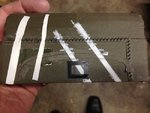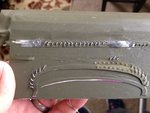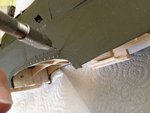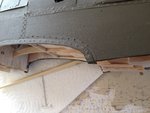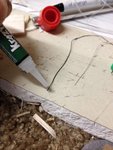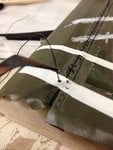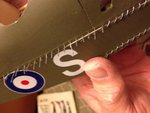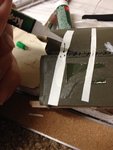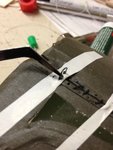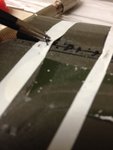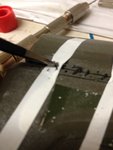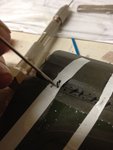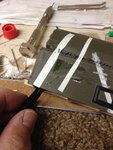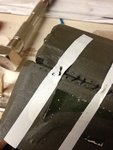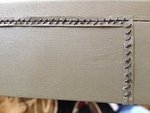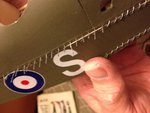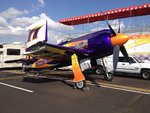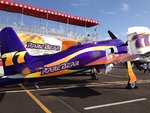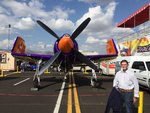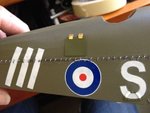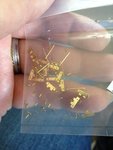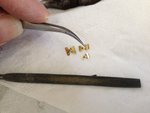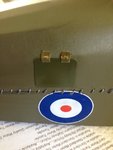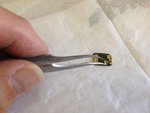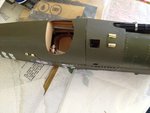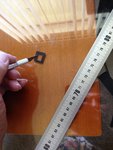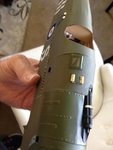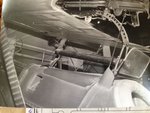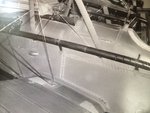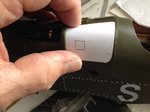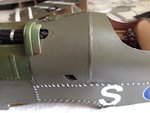- Thread starter
- #141
Skyediamonds
Staff Sergeant
- 1,362
- May 26, 2018
Okay guys, we now begin our little soree' into the wonderful world of stitching without using the needle. Keep in mind that I had to use the old scratched out practice fuselage section to take new pictures for this post to show you my techniques. Remember too, that the underside of the fuselage was purposely left open until all detailing, stitching, and accessories were completed and installed.
We start out with the practice scrapped fuselage section to show you (again) my trials and experiments to see if my ideas would work. From these different concepts, I then applied my techniques to the model itself. My first stage was to use a hand held pin vise to drill all the holes necessary for the threads to go through. Here, on the fuselage to the model, you can see what I'm doing. You can easily see that the pin vise is really slow and tedious, but it's safe to use against a fragile balsa fuselage and I have more control over how much pressure to put onto the drill bit. ** Special note, drill the hole at least 50% bigger than the thread. Because the hole will shrink a bit from the covering over the balsa, plus the thread will tend to fray out when using it.
We start out with the practice scrapped fuselage section to show you (again) my trials and experiments to see if my ideas would work. From these different concepts, I then applied my techniques to the model itself. My first stage was to use a hand held pin vise to drill all the holes necessary for the threads to go through. Here, on the fuselage to the model, you can see what I'm doing. You can easily see that the pin vise is really slow and tedious, but it's safe to use against a fragile balsa fuselage and I have more control over how much pressure to put onto the drill bit. ** Special note, drill the hole at least 50% bigger than the thread. Because the hole will shrink a bit from the covering over the balsa, plus the thread will tend to fray out when using it.

